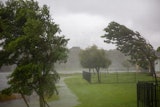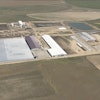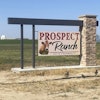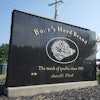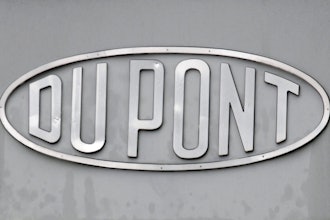Large indoor operations that generate heat require positive airflow, particularly in buildings that rely on natural circulation and roof vents to exhaust warm air. When properly designed, natural airflow configurations can be more environmentally friendly and less expensive to run and maintain than HVAC systems. However, when the wind and ambient airflow decrease in the hot summer months, pockets of stagnant hot air can form and raise the overall temperature of the indoor facility well above that of the outdoors.
Operations such as steel/iron works, glass/ceramic production and die-casting often experience issues with employee comfort and morale due to high temperatures. Redesigning building configurations can be cost-prohibitive, particularly if the issue is only present a few months out of the year.
With this in mind, Trace Die Cast, Inc. (TDC), headquartered in Bowling Green, KY sought help cooling its personnel working at aluminum die casting stations by implementing a solution that would improve positive air flow toward the roof vent. “Rather than HVAC, our facility has a natural airflow system, which uses fan-driven vents on the walls and a large pitched ceiling design,” said Kent Guthrie, Vice President of Facilities for TDC. “The lack of air movement can create an uncomfortable atmosphere for our employees at certain times in the year, so we looked for an effective but affordable solution.”
High Pressure Die Casting
To serve its primary customer base in automotive-related industries, Trace Die Cast operates 37 high-pressure/high-speed die casting machines in one of the most modern
facilities of its kind in North America. With more than 70 computerized numerical control (CNC) programs used for cutting, machining and milling, the company is able to produce complex engine, transmission and driveline castings for major OEM and aftermarket automotive parts suppliers.
At TDC, four large open-air production rooms measuring 35,000 square feet (3250 m2) each and containing up to 10 die casting workstations are housed within the 175,000 ft2 (16,250 m2) facility. In addition, there are four melting furnaces producing up to 21,000 lbs (9,525 k) of melted aluminum per hour.
A precisely-engineered steel mold is placed within the injection molding machine and a powerful hydraulic ram slowly injects 8 to 22 lbs (3.6 to 10 k) of aluminum, depending on the part. Upon release, the 750ºF (400ºC) casting is placed on a 14-foot-long (4.2 m) conveyor belt that slowly runs the raw part under a series of blowers, cooling it to near room temperature.
“Once it’s been trimmed, the cast part moves through the drilling, milling and lathe stations,” said Guthrie. “All of these processes take place in the same area, so even though the staff isn’t working directly with molten material, they are still affected by the heat and low airflow.”
Positive Airflow And Bernoulli's principle
The production “rooms” are actually four separated, unconfined areas that share a central passage in two rows, leading to openings on either side of the facility. The walls of the building have vents with slowly churning fans that draw air into the 350,000 ft3 (9910 m3) space and a 150 ft2 (14 m2) pitched roof vent on the ceiling that exhausts the hot air.
Wind is one of the essential elements of creating positive airflow in rooftop venting systems. The action of horizontal wind pressure across a vent is expressed in Bernoulli's principle of flow dynamics, which explains how air exhaust can induce the compression and expansion of air indoors.
In TDC’s facility, the absence of consistent air flow across the vertical roof vent during the summer created a negative pressure situation. Heated air would build up at the ceiling, causing the pressure on the inside to exceed that of the outside and preventing it from being properly exhausted. This allowed stagnant air to get trapped in pockets, raising the ambient temperature throughout the facility.
“A local colleague of mine had a similar issue in his smelting operation,” Guthrie said. “I checked out his solution using fan-driven atomized mist cannons with the water function shut off, and it worked so well for him that we called Dust Control Technology (DCT) and rented two KoolBoss units.”
The machines are designed to atomize a water supply into millions of tiny droplets, which are propelled by a powerful fan forcing air through a cone-shaped barrel. By turning off the water, a dry air stream is created, allowing operators excellent control over the airflow.
Directing Airflow
“Running at 9200 CFM (260.50 CMM), the fan creates a long, directed airstream which then slowly disperses,” explained DCT President Laura Stiverson. “The ducted fan design differs from a standard open-face industrial fan by enhancing both airflow and control.”
“We set the cannons at both of the entrances on opposite ends of the facility and pointed them at each other, so they could create a directed airstream down the central aisle,” Guthrie explained. “The stream pulled the stagnant air with it to the center of the room, where the rising heat from the melting furnaces directed the air to the vent, creating positive flow upward from the ground.”
The KoolBoss is designed with a powerful 7.5 horsepower fan, set in the rear of a specially engineered cone-shaped steel barrel, with the fan blades shielded by a heavy mesh guard. The unit draws air from the wide opening in the tail and forces it down the cone toward the narrower mouth in front, where the shape increases the air velocity and directs the discharge. Either mounted on a mobile carriage or a square steel tube skid, the golf-cart sized unit weighs approximately 800 lbs (363 kilograms) and can be easily relocated wherever it is needed.
Results
The units were run 24/7 over a three-month period, without disruption and only the occasional position adjustment. Operators report that the units pulled air from the entrances and delivered a strong airflow that extended down the length of the work aisle
and prevented hot air from forming into pockets, boosting positive flow out of the roof vents. The circulation lowered the overall temperature of the facility and created a more controlled and comfortable work environment.
“Although this is primarily a seasonal problem, there are times throughout the year that we need a unit on hand, so we’re budgeting for a purchase,” Guthrie concluded. “The increased power would allow us to produce even more airflow and circulation throughout the entire space. That would go a long way to creating the best work environment possible for our employees, which is the whole point.”
